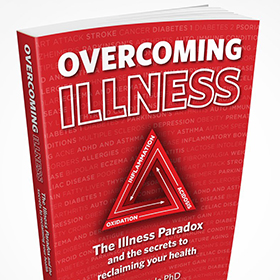
Inflammation and cancer
The link between chronic inflammation and cancer has long been recognized since the 19th century German pathologist Rudolph Virchow first hypothesized that the origin of cancer was at sites of chronic inflammation. Now it seems that modern science has caught up with the observations of the 19th Century. Considerable advances in cancer research relates to the role of inflammation in the development of cancer. Research in 2003 demonstrated that there is a link between inflammation and tumour growth 12. In 2010 several piece of the puzzle came together when researchers reported they could definitively show that inflammation in the breast is key to the development and progression of breast cancer 13. In an earlier study, women with high levels of two markers of inflammation―C-reactive protein and serum amyloid A―were two to three times more likely to die early or have their cancer return than women with lower level 14.
Now there is a large body of evidence that chronic inflammation is involved in all stages of cancer development. Generally inflammatory white blood cells (leukocytes such as neutrophils; monocytes, macrophages and eosinophils) mediate the growth of inflammation associated cancer, although other cells including cancer cells are also involved 15,16. Animal testings provide strong evidence that chronic inflammation contributes to the promotion of cancer 15 and through suppression of the immune system it allows the outgrowth and proliferation of malignant cells 17. Inflammation affects the microenvironment of the cancer; it increases malignant growth 17; may alter blood flow processes; and the cancers response to remedial substances and hormones 18.
There is now convincing evidence that carcinogenesis often evolves as a progressive series of highly specific cellular and molecular changes in response to induction of constitutive over-expression of COX-2, an enzyme responsive for inflammation, and the prostaglandin cascade in the ‘inflammation of cancer’. Molecular studies reveal that over expression of COX-2 is a prominent feature of virtually every form of cancer while the expression intensifies with stage at detection, cancer progression and metastasis. It appears that COX-2 expression is not only an early event in the genesis of cancer, but is required throughout the entire evolutionary process of cancer development
In support of this back in 2005 Prof. Houghton 19 and her colleagues found that an infection with Helicobacter felis (a bacterium related to infectious Helicobacter pylori in humans) which causes a large amount of inflammation leads to an influx of bone marrow-derived stem cells (BMDCs), as the body tries to repair the injury caused by the infection. They were able to show that this transformation of BMDCs is the event that actually sparks malignant tumors of the stomach. They showed that bone marrow-derived stem cells attempt to participate in repair but, under conditions of inflammation and oxidation, are unable to behave normally and instead progress towards cancer. BMDCs have other cancer-like properties, including: the capacity for unlimited growth and the ability to avoid apoptosis (programmed cell death) signals. These properties give them a significant growth advantage making them difficult to control once they have mutated. the BMDCs, depending on environmental cues for development and differentiation, encounter an abnormal environment of conflicting growth signals. There follows a downward spiral of metaplasia (the conversion of normal to abnormal tissue); dysplasia (emergence of a precancerous growth); and finally carcinoma (frankly malignant cancer, capable of metastasizing). It appears that cancers are just the body trying to adapt to a toxic internal environment of inflammation and oxidation.